#consolidated pby catalina
Explore tagged Tumblr posts
Text

Consolidated PBY-4 Catalina flying over a hangar and several North American SNJ Texans, Navy trainers, at Dutch Harbor, Unalaska Island, Aleutian Islands, Alaska.
Photographed by Thornton, H. Marion in the 1950s.
Alaska State Library: ASL-P338-0409
#Consolidated PBY Catalina#Convair PBY#PBY Catalina#Consolidated#PBY#Catalina#Patrol Bomber#Flying Boat#Seaplane#North American SNJ Texan#North American SNJ#SNJ Texan#SNJ#T-6#United States Navy#U.S. Navy#US Navy#USN#Navy#Dutch Harbor#Alaska#undate#1950s#my post
97 notes
·
View notes
Text
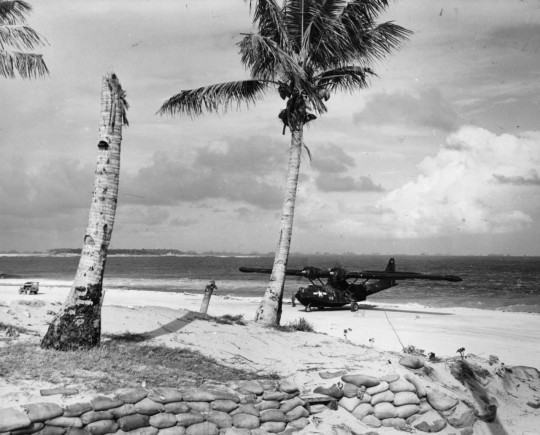
'Black Cats on the Beach'
Consolidated PBY-5A Catalina sur une plage de l'atoll d'Ulithi – Guerre du Pacifique – Iles Carolines – 13 mars 1945
©Naval History and Heritage Command – NH 309720
#WWII#guerre du pacifique#pacific war#aviation militaire#military aviation#hydravion#flying boat#hydravion de reconnaissance maritime#maritime reconnaissance aircraft#consolidated pby catalina#pby catalina#catalina#iles carolines#caroline islands#13/03/1945#03/1945#1945
10 notes
·
View notes
Text

Ad for Rohm & Haas Company’s Plexiglas - 1938.
#vintage advertising#plexiglas#chemistry#plastic#plastics#acrylic#acrylics#windows#synthetic glass#rohm & haas#acrylic plastic#dow chemical company#dow chemical#dow#vintage aircraft#pby catalina#pb2y coronado#consolidated aircraft corporation#consolidated aircraft#consolidated pby catalina#consolidated pb2y coronado
3 notes
·
View notes
Text

1944 Catalina Flying Boat landing on Lake Wanaka
#Consolidated#PBY#Catalina#PBY-5#flying boat#seaplane#Lake Wanaka#aviation photography#aircraft#plane
175 notes
·
View notes
Text

US Navy Catalina over the Aleutian Islands, 1943
@ron_eisele via X
#pby catalina#consolidated aviation#seaplane#search and rescue#reconnaissance#navy#aircraft#ww2#aviation#us navy
68 notes
·
View notes
Text

A Consolidated PBY Catalina coming in through the ice.
Photographed on February 23, 1956.
Captain Lloyd H. (Kinky) Bayers Collection, 1898-1967.
Alaska State Library Digital Collections: ASL-MS10-4-086-07-0881
#Consolidated PBY Catalina#Convair PBY#PBY Catalina#Consolidated#PBY#Catalina#Patrol Bomber#Flying Boat#Seaplane#United States Navy#U.S. Navy#US Navy#USN#Navy#February#1956#my post
15 notes
·
View notes
Text

December 1943. A Consolidated PBY 5 Catalina starboard side, waist gunner manning a .50 caliber machine gun. ‘Black Cat Squadron’ VP-12 at Henderson Field, Guadalcanal.
265 notes
·
View notes
Text
Consolidated PBY Catalina

240 notes
·
View notes
Text
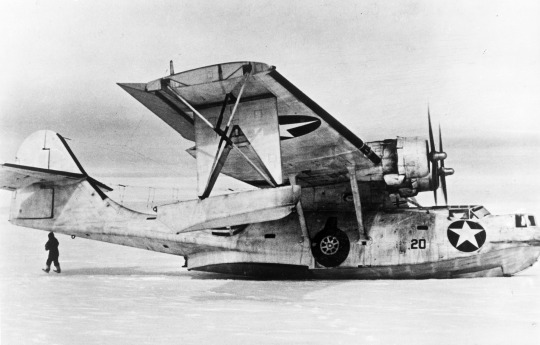

Consolidated PBY Catalina seaplane of Norwegian arctic explorer Bernt Balchen after landing on ice, during a rescue mission in Greenland, 1943.
225 notes
·
View notes
Text
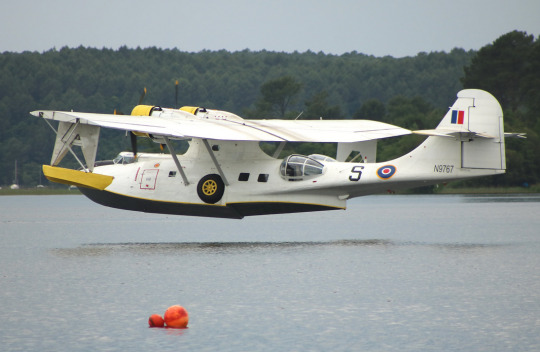
1943 PBY making a graceful arrival at the International Seaplane Meeting at Bisscarrosse, France
#Consolidated Vultee#PBY#Catalina#Flying boat#seaplane#vintage aircraft#Model 28#Amphibian aircraft#Aviation#airplane#Lake Bisscarrosse#Flying
302 notes
·
View notes
Text

The rescue of Brigadier General Nathan Twining and his party of 14 who had been adrift in the Coral Sea for 5 days after their B-17 aircraft was forced to ditch, 1 Feb 1943. Note PBY Catalina of Patrol Squadron VP-91
@VoicesofWW2 via X
24 notes
·
View notes
Text

Consolidated PBY Catalina photographed from USS President Jackson APA-18 off of Rendova - 1943.
132 notes
·
View notes
Text

(Front to Back) USS Saratoga (CV-3), USS Enterprise (CV-6); USS Hornet (CV-12) and USS San Jacinto (CVL-30) docked at the Air Station's piers, in Naval Air Station, Alameda, California, circa mid-September 1945.
Note: the Consolidated PBY Catalinas parked at the far left.
NHHC: 80-G-701512
#USS Saratoga (CV-3)#USS Saratoga#Lexington Class#USS Enterprise (CV-6)#USS Enterprise#Yorktown Class#USS Hornet (CV-12)#USS Hornet#Essex Class#USS San Jacinto (CVL-30)#USS San Jacinto#Independence Class#Light Carrier#Aircraft Carrier#Warship#Ship#Alameda#California#west coast#United States Navy#U.S. Navy#US Navy#USN#Navy#September#1945#my post
37 notes
·
View notes
Text

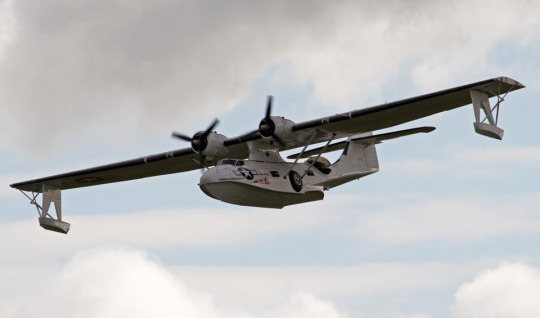
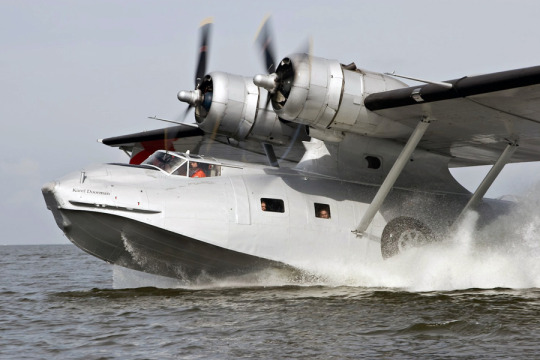

Consolidated PBY Catalina
Manufacturer:Consolidated Aircraft CorporationType:Patrol bomberCrew:7 to 9
Dimensions:
Length: 63 ft. 10 in. Height: 18 ft. 6 in. Wingspan: 104 ft. Wing Area: 1,400 sq. ft.Weight:
Empty: 17,526 lb. Gross: 34,000 lb.Performance:
Max Speed: 189 mph at 7,000 ft. Ceiling: 18,100 ft. Range: 2,990 miles
Armament:
Two .30-in. and two .50-in. flexible-mounted machine guns and provisions for four 1,000 lb. bombs
44 notes
·
View notes
